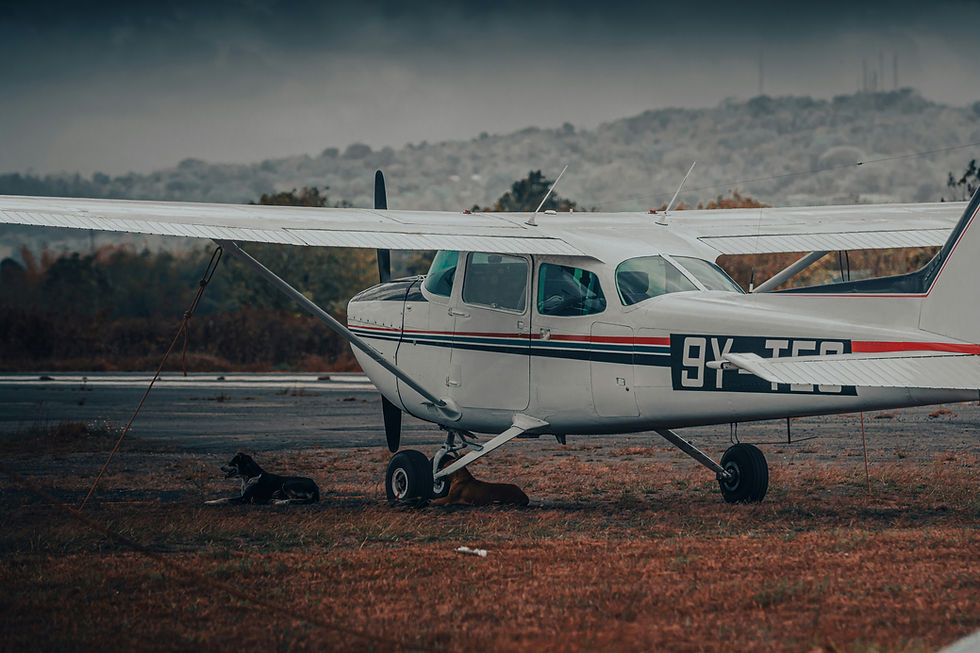How to Become a Pilot in India: Step-by-Step Career Guide
- Ishansh Sachdeva
- Jul 1
- 3 min read

If you've ever dreamed of soaring through the skies, becoming a pilot in India can be a rewarding and adventurous career path. Whether you aspire to fly commercial airliners, private jets, or become a defense pilot, India offers several avenues to achieve your aviation goals.
In this guide, we’ll cover everything you need to know about how to become a pilot in India, including qualifications, training institutes, costs, licenses, and career opportunities.
Who Can Become a Pilot in India?
To start a career as a pilot in India, you need to meet the basic eligibility criteria:
Age: Minimum 17 years old for a Student Pilot License (SPL)
Educational Qualification: 10+2 with Physics, Mathematics, and English (Science stream)
Medical Fitness: Pass the DGCA Class 1 Medical Examination
Types of Pilots in India
Before diving into the process, it’s important to understand the types of pilot careers in India:
Commercial Pilot (CPL): Fly for commercial airlines or charter services.
Private Pilot (PPL): Fly non-commercial aircraft for personal use.
Airline Transport Pilot (ATPL): Senior license for captains and instructors.
Military Pilot: Serve in the Indian Air Force or other defense services.
Step-by-Step Guide: How to Become a Pilot in India
1. Complete Your 10+2 Education
Start with a Science stream in your higher secondary education. Ensure you study Physics and Mathematics as these are mandatory subjects for pursuing pilot training.
2. Pass the Pilot Medical Exam
You must pass a Class 1 Medical Examination by a DGCA-authorized medical examiner. This checks your eyesight, hearing, heart health, and overall physical condition.
3. Enroll in a Flying School
Choose a DGCA-approved flying school in India. Some reputed ones include:
Indira Gandhi Institute of Aeronautics, Chandigarh
Indira Gandhi Institute of Aviation, Mumbai
Capt. Sahil Khurana Aviation Academy, Delhi
Rajiv Gandhi Aviation Academy, Hyderabad
Here, you will complete 200 hours of flying to qualify for a Commercial Pilot License (CPL).
4. Obtain a Student Pilot License (SPL)
Before actual flying training, you need to obtain an SPL. This involves:
Written exam in Air Regulations, Air Navigation, and Meteorology
Oral interview by a DGCA official
5. Start Flight Training for a CPL
Once you have an SPL, your formal pilot training begins. This includes:
200 hours of flight training
Ground classes on aviation theory
Simulator training
6. Clear DGCA CPL Examinations
You must pass DGCA theoretical exams in:
Air Navigation
Air Meteorology
Air Regulation
Technical General and Technical Specific
7. Apply for a Commercial Pilot License (CPL)
Once you complete training and pass exams, you can apply for a CPL from DGCA, which qualifies you to fly commercial aircraft in India.
Cost of Becoming a Pilot in India
The total cost of becoming a commercial pilot in India ranges between ₹35 lakhs to ₹50 lakhs, depending on the flying school, hours of training, and other associated fees.
Career Opportunities for Pilots in India
After obtaining a CPL, you can apply to work with:
Commercial airlines (IndiGo, Air India, SpiceJet, Vistara)
Charter services and private jet companies
Flight instructor positions at aviation academies
Cargo airlines and logistics firms
Corporate aviation departments
With an ATPL and experience, you can rise to positions like Captain, Chief Pilot, or Training Captain.
Frequently Asked Questions (FAQs)
How long does it take to become a pilot in India?
It takes 18 to 24 months on average to become a commercial pilot in India, depending on your flight hours and exam performance.
Can commerce or arts students become pilots?
Yes, but they must take Physics and Mathematics through NIOS (National Institute of Open Schooling) to meet eligibility for pilot training.
Is there a government entrance exam for pilot training?
For civil aviation, there is no national entrance test. However, for defense services, you need to clear NDA or CDS exams for pilot training in the Indian Air Force.




Comments